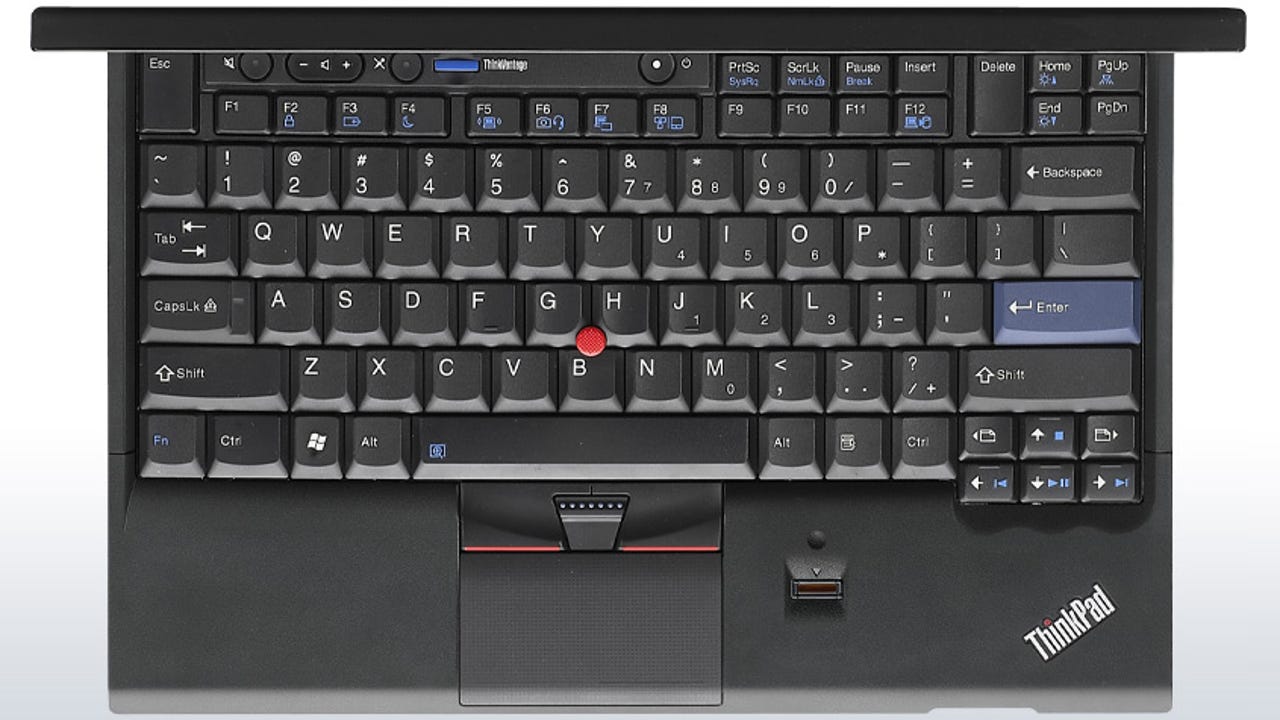A retro 'ThinkPad Classic' could be a killer laptop not crippled by insane thinness


Lenovo's ThinkPads still sport the traditional livery -- black with red highlights -- so the real question is trickier: what have ThinkPads lost that we used to love about them?
The main feature for writers was, obviously, a high quality keyboard. Other traditional ThinkPad features included matte 4:3 screens, TrackPoint pointing devices, removable extended-life ("fat") batteries, and rugged construction. The less-well-liked feature was the inevitably high prices.
Featured
My first love was a British-built ThinkPad 240X, second in a line that appeared in 1999. This was a 2.9lb ultraportable with a 10.4-inch screen, no floppy drive and no optical drive. Mine ran Windows 2000 on a Mobile Pentium III. Apple didn't introduce its similar 13in MacBook Air for another eight years -- a lifetime in computing terms. Of course, by then, ultralight ThinkPad X users had moved on through the X31 or X41 to the X61, followed by the X200 and X300 in 2008. The last in this classic line was the X220, launched in 2011.
The 240X obviously had a very limited specification by today's standards: an 800 x 600-pixel screen, only 64MB of memory (I added the maximum 128MB upgrade), no USB ports (it had a CardBus slot for accessories), and no Wi-Fi (it had a 56k modem built in).
But it did have a terrific keyboard with real keys, even though it was slightly smaller than full size. You could type on it for hours. Indeed, the Chinese-made keyboards in next decade of ThinkPad X laptops, right up to the X220, were also very good. This is not to claim I used all of them, but Lenovo only changed the fundamentals when it switched to using thin keyboards with the X230 and X1 Carbon line.
And we all know that, in the real world, you can either have a great keyboard or a thin keyboard, but not both.
I'd also vote for the re-introduction of interchangeable "fat batteries" so you can carry a spare. A decade ago, I could fly from London to Seattle, changing planes in Chicago, and still have more than enough power for the bus into town from SEATAC. (It's not a route I recommend, but I did it, so I know.)
Lenovo knows how to do this stuff. The X220 could run for up to 23 hours with the 9-cell battery and a snap-on external battery. In fact, with removable batteries, you could choose whether you wanted extra weight or extra power. The 3-cell battery provided about four hours of continuous web surfing, while the 6-cell battery lasted almost eight hours and the 9-cell "fat battery" ran for 12 hours 39 minutes. This was six hours longer than the 13in MacBook Air (2010) on the same test.
So, I think the X220, rather than the older X300, would be a good choice to form the basis of a "ThinkPad Classic". It already had Intel Core iX (Sandy Bridge) processors, up to 8GB of memory, USB 3.0, HDMI, SSD drives and Windows 7 in a package that weighed "from 3lbs (1.3kg)". It may be old, but it still beats many current machines.
AR + VR
The X220 would obviously need its 12.5-inch screen upgrading from 1366 x 768 pixels to 1920 x 1080 or, for preference, 1920 x 1200, which is 16:10. Make it thinner, chuck in a modern low-TDP Broadwell processor, a 16GB memory option, and a few other tweaks and it would be good to go.
The X220 Classic would not, of course, be the thinnest laptop around, but neither would it have their horrible limitations. I'd rather have the superior keyboard, fast processor and long battery life than save a few millimeters.
Speed, battery power, expandability, repairability and light weight all have tangible business benefits. Thinness doesn't: it's just a marketing concept. Extreme thinness is crippling and should be considered harmful.
Related
- ThinkPad Time Machine? David Hill floats the idea of making a ThinkPad Classic
- Lenovo 'exploring' retro ThinkPad revival, by Steven J. Vaughan-Nichols at ZDNet